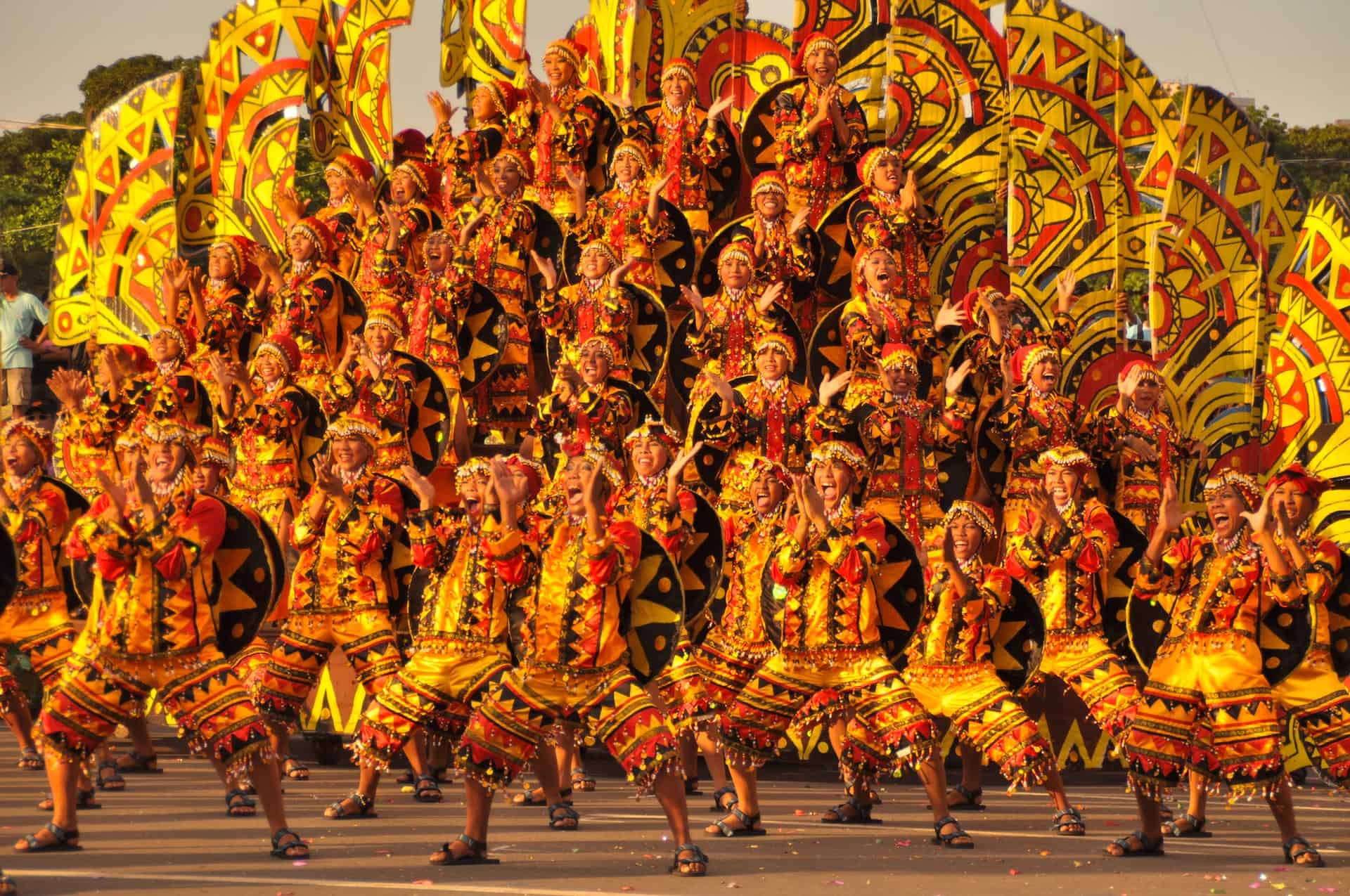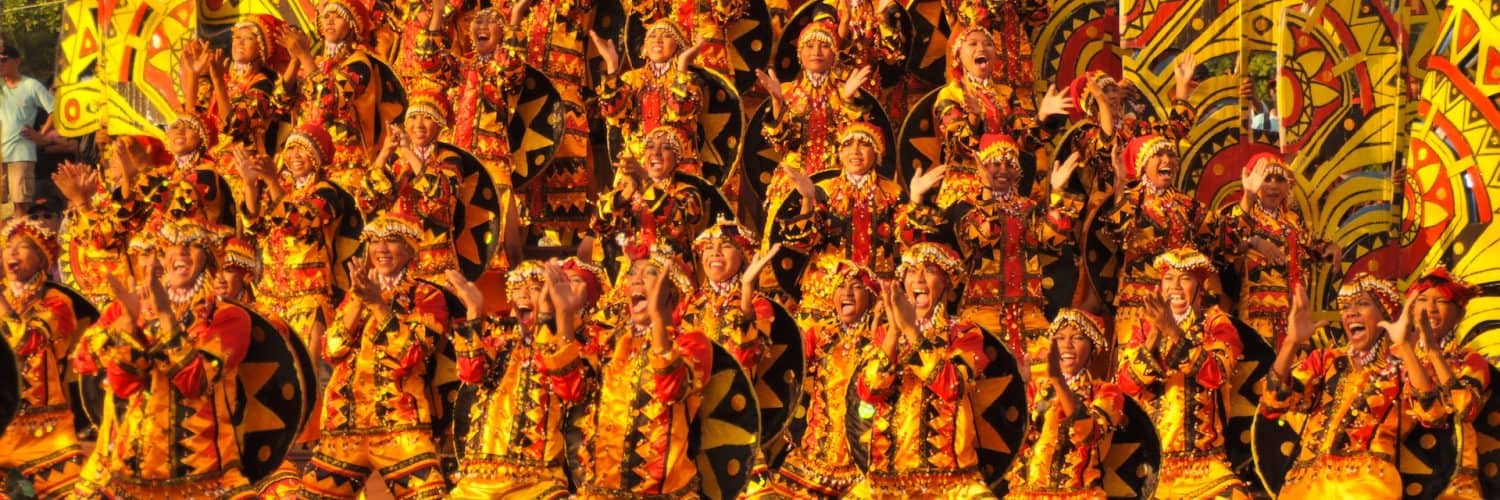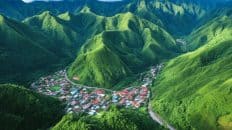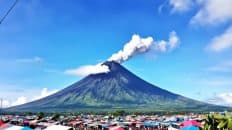The Philippines is not just famed for its pristine beaches and captivating landscapes, but also for its rich tapestry of culture, history, and festivities. Across the islands, celebrations emerge, each showcasing its unique blend of indigenous, Spanish, and modern influences. Let’s journey through the ten best festivals in the country, offering both locals and tourists an unforgettable experience of Filipino zeal and zest.
10 Best Festivals in the Philippines
- Sinulog Festival – Cebu City
- Panagbenga Festival – Baguio City
- Ati-Atihan Festival – Kalibo, Aklan
- Pahiyas Festival – Lucban, Quezon
- Moriones Festival – Marinduque
- Kadayawan Festival – Davao City
- Obando Fertility Rites – Obando, Bulacan
- Feast of the Black Nazarene – Manila
- MassKara Festival – Bacolod City
- Pintados Festival – Tacloban City

Sinulog Festival – Cebu City
Taking place on the third Sunday of January, the Sinulog Festival is a dance ritual that commemorates the Filipinos’ conversion to Christianity and their reverence for the Santo Niño, or the child Jesus. Streets come alive with vivid colors, rhythmic drumbeats, and dancers dressed in intricate costumes, moving gracefully to the chant of “Pit Senyor!” The festival is not only a religious event but also a vibrant spectacle that mirrors the Cebuanos’ passion and spirit.Highlight events include the grand parade, street parties, and the religious procession. While the Sinulog showcases the deep-rooted Catholic faith of many Filipinos, it also incorporates pre-Hispanic customs, making it a fusion of the country’s history and evolving traditions.
Panagbenga Festival – Baguio City
Every February, the summer capital of the Philippines transforms into a floral paradise. Panagbenga, or “A Season of Blooming,” is an apt title for this month-long event. Celebrated to honor Baguio’s abundance of flowers, the festival is also a testament to the city’s resilience after a devastating earthquake in 1990.The grand float parade is a showstopper. Spectacularly decorated floats, adorned entirely with flowers, glide through the streets. They are accompanied by street dancers garbed in floral-inspired costumes. The festival also promotes local handicrafts, food, and art, giving visitors a rounded experience of the city’s culture.
Ati-Atihan Festival – Kalibo, Aklan
Rooted in both indigenous traditions and Catholic beliefs, Ati-Atihan celebrates the 13th-century barter of Panay Island. Participants paint their faces with black soot, don colorful traditional clothing, and dance to the entrancing beats of drums. This loud and vibrant spectacle takes place every third week of January.Originally a pagan festival, the Spanish colonialists later incorporated Christian elements. Today, the festival honors both the native Ati people and the Santo Niño, highlighting the blend of indigenous and colonial influences in Filipino culture.
Pahiyas Festival – Lucban, Quezon
Pahiyas, celebrated every 15th of May, is a thanksgiving festival for a bountiful harvest. Homes are lavishly decorated with colorful rice, fruits, vegetables, and handicrafts. The most iconic decor is the ‘kiping,’ bright and multi-colored rice paste wafers shaped like leaves.As you walk through the streets, you’ll witness a visual feast of creativity. Besides the decorations, various contests, parades, and activities fill the day. The culmination is the procession of the image of San Isidro Labrador, the patron saint of farmers.
Moriones Festival – Marinduque
Celebrated during Holy Week, the Moriones Festival stands out with its dramatic reenactment of the biblical story of Roman soldier Longinus. Participants wear intricately crafted masks and helmets, depicting Roman centurions, adding an air of mystery and solemnity to the proceedings.The week-long event is more than just a display of costumes. It’s deeply spiritual, culminating in the reenactment of the passion and death of Jesus Christ. While it’s a serious affair, there’s still room for fun, as ‘Morions’ often playfully interact with onlookers, keeping the atmosphere lively.
Kadayawan Festival – Davao City
Held in August, Kadayawan is a celebration of Davao’s rich cultural heritage, bountiful harvest, and appreciation for the city’s indigenous tribes. Derived from the local word “madayaw” which means good, the festival captures the essence of Davao’s spirit.Highlights include the ‘Indak-Indak sa Kadalanan’ (street dancing) and the ‘Pamulak sa Kadalanan’ (floral float parade). Indigenous crafts, music, and dances are showcased, offering an immersive experience into the heart of Davao’s diverse culture.
Obando Fertility Rites – Obando, Bulacan
Every May 17 to 19, hopeful couples dance through the streets of Obando, seeking divine intervention for a child. The festival is a poignant display of faith, hope, and the Filipino spirit. Couples, together with single men and women, dance joyfully to the rhythm of local tunes, each step a prayer, each move a plea.While it’s primarily a religious event, the festivity is inclusive. It’s not just about fertility but also a celebration of life, love, and the enduring Filipino spirit.
Feast of the Black Nazarene – Manila
Every 9th of January, millions of devotees flock to Manila’s streets to participate in the Traslación, a procession transferring the life-sized image of the Black Nazarene from one church to another. The crowd’s fervor is palpable as many believe that touching the statue can bring miracles.The festival is a testament to the profound faith of Filipinos. Amidst the sea of devotees, you’ll witness tears, prayers, and songs, all pouring out in deep devotion and hope.
MassKara Festival – Bacolod City
Bacolod City comes alive every October with its MassKara Festival. The term ‘MassKara’ is coined from the words ‘mass’ (a multitude of people) and the Spanish word ‘cara’ (face), suggesting a multitude of smiling faces. This festival was conceived during a period of crisis in the 1980s to uplift the spirits of the locals.Dancers don vibrant masks with gleaming smiles, reflecting the city’s moniker as the “City of Smiles.” With its street parties, concerts, and dance competitions, MassKara is undoubtedly a spectacle of resilience and joy.
Pintados Festival – Tacloban City
Pintados celebrates the warrior culture of the ancient people of the Eastern Visayas region. Held in June, participants paint their bodies with intricate patterns inspired by the tattoos of the region’s early inhabitants.The festival is not just a showcase of artistry but also a means of education, highlighting the rich history and heritage of the region. Through dances, music, and art, Pintados tells tales of bravery, love, and the enduring spirit of the Filipino people.
The festivals of the Philippines are not just events on a calendar; they’re a vibrant reflection of the nation’s soul. They showcase resilience, joy, faith, and the rich tapestry of history and culture. Whether you’re a local reveling in the traditions of your homeland or a traveler seeking a deep cultural immersion, these festivals promise an experience


















Add comment